Last week, Armenia hosted one of the largest tech conferences in the world: The World Congress on Information Technology. It’s a big deal—in the past, keynote speakers included the likes of Bill Clinton, Larry Ellison, and Bill Gates, and the venues are usually located in major cities like Toronto and Sydney. The conference’s location in Yerevan this year was a huge source of pride for Armenians.
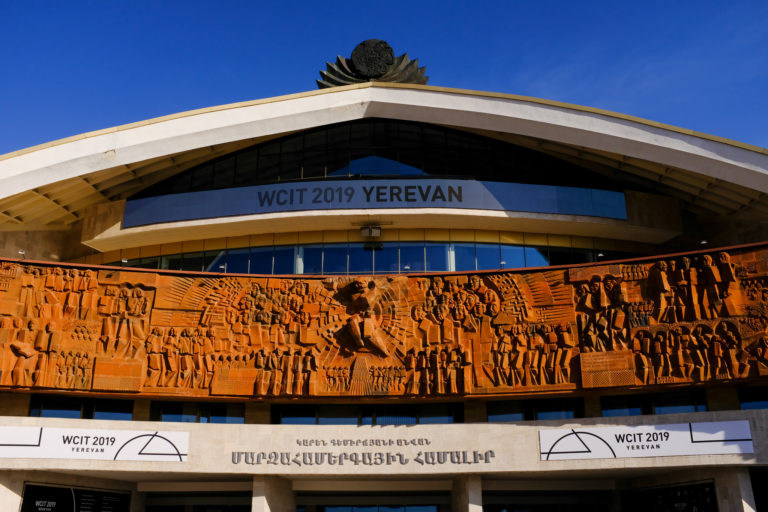
Of course, the location makes a lot of sense when you consider this year’s theme: The Power of Decentralization. It’s hard to think of a better place to discuss this topic than Yerevan, where citizens mobilized through social media during last year’s Velvet Revolution.

During the 3-day conference, the talks dived right into the meaty questions: Where do we draw the line between human-centered technology and technology-centered humans? Is social media the great equalizer, or does it just amplify the same voices from the top? What are the cultural and social implications of machine-made art? This last question was especially relevant, since the conference kicked off with an orchestra performance of a piece that was composed live through AI.
Here are some of the key lessons I learned from the conference:
Kim Kardashian West, Founder of SKIMS, talked about activating your community through media.
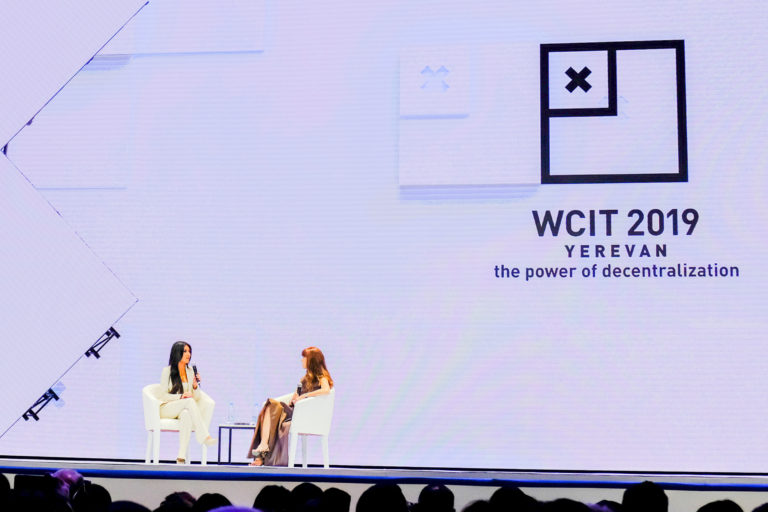
Kim is recognized for her 100M+ followers on Instagram, but she doesn’t just let them sit there. Although it may not seem like it, she’s quite intentional about how she uses her content to activate her community of fans.
Every month, she releases a new product aligned with her personal brand. SKIMS, her new shapewear company, grew out of the fact that she was always dying her shapewear with tea bags so that they could match her skin color. Consequently, she launched her collection in 9 different skin shades, so her products could be inclusive for all who want to wear them.
She also uses her show, Keeping Up with the Kardashians, to make viewers feel invested in her products. “People want to see the behind-the-scenes,” said Kim. “If fans see us fighting over a fragrance, it’s likely that they will be more invested in it when it comes out.”
At the conference, Kim even used her time on stage to announce she has new beauty products in the pipeline inspired by her time in Yerevan, including a fragrance based on Armenian flowers. Immediately, the audience burst into applause, and it’s likely they’ll be among the first to purchase it.
Alexis Ohanian, Founder of Reddit and Initialized Capital, showed the importance of connecting with your tribe.
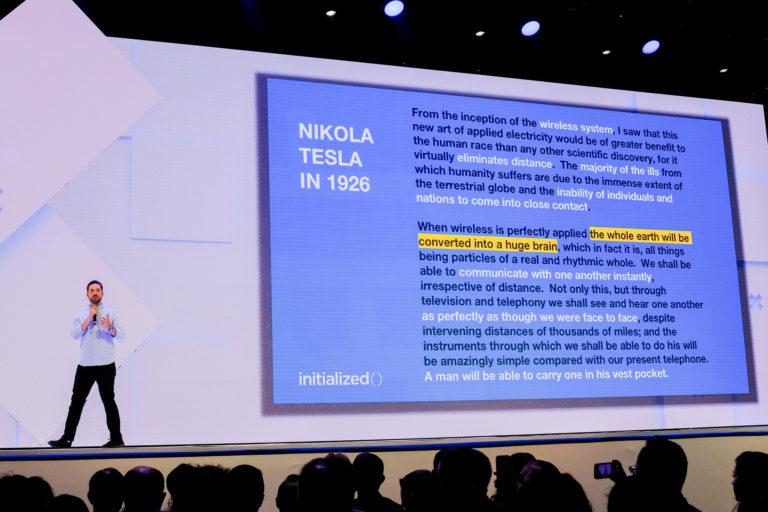
I’ve seen Alexis speak twice, and both times, I found his personality really charming. He just seems like an empathetic, down-to-earth person. At the conference, he used his keynote speech not to pitch his own venture capital firm, but rather to talk about his 4-month stay in Armenia, to encourage Armenians to innovate, and to talk about how proud he was to be here among his people during such an exciting time of development.
During his talk, he said that chess is integrated into the Armenian school system—all students take lessons as part of their curriculum. As a result, they develop strong logic and problem-solving abilities, which is a great foundation for other skills like computer programming.
We spoke to some of the young volunteers for the event, who said that Alexis walked through the main entrance for the conference rather than from the VIP door and stopped to take photos with the people he passed.
He also used his free time outside of the conference to connect with local Armenian organizations, including female startup founders.
These small gestures of humility made him, anecdotally, a favorite of the conference.
Gary Vaynerchuk, serial media entrepreneur, encouraged taking advantage of underpriced attention.
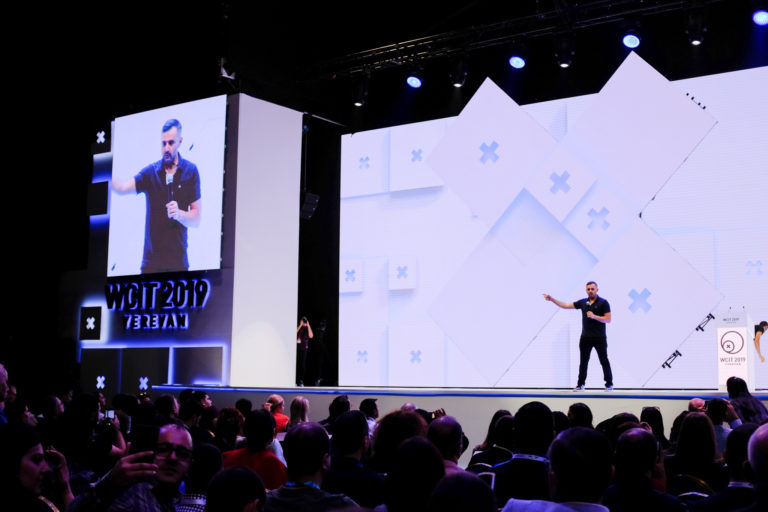
It seems like Gary is all over the web these days, from Instagram to Youtube to LinkedIn. He stays true to his philosophy of making rather than debating, and he aims to output 20-100 pieces of content per day. If you don’t share posts regularly, he believes that you are wasting a golden opportunity to reach an audience and shape your brand.
However, he doesn’t create this content from scratch. Instead, he focuses his attention on creating “pillar content” and then cutting up pieces of it for different platforms—kind of like how chefs use all parts of an animal for different meals.
For example, his keynote speech could be divided in several different ways: the audio could be used for a podcast; video clips can be posted on Youtube and LinkedIn; quotes and photos could be featured on Instagram and Facebook. His team helps him ensure quick turnaround of content.
Gary shared a story about his childhood lemonade stand. He surveyed all the streets in his neighborhood so that he could set up his stand in a spot where he knew there would be the most foot traffic. This mindset of close observation stands true today in his media companies.
“Watch where humans go and understand what you need to put in front of them to create value,” he said. He also encouraged the audience to experiment with new platforms, like TikTok, because it’s when attention is the most “underpriced” and the supply of quality content doesn’t yet fill demand.
Alex Chung, Founder of GIPHY, shared the value of connecting your company to a larger mission.
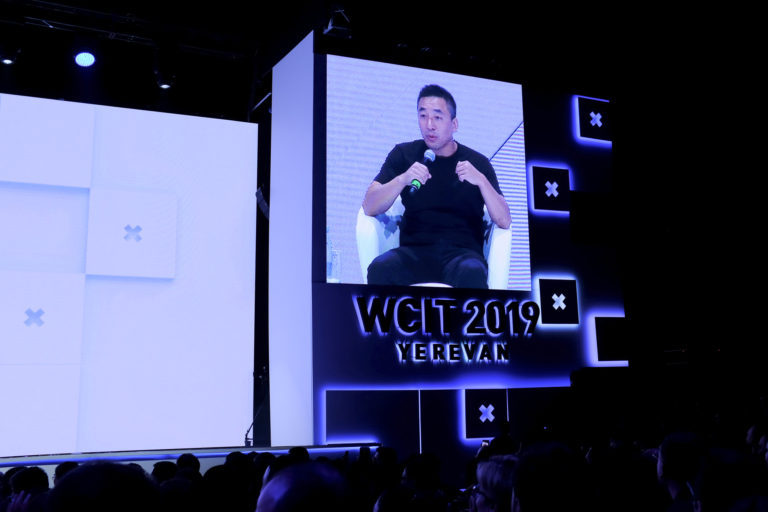
Before this conference, I considered GIPHY as just a delightful form of entertainment. In reality, though, it’s a search engine second only to Google. Alex described it as a catalogue for human expression that extends beyond words; consequently, he finds himself considering more philosophical questions like how to best communicate concepts like love and happiness across cultures. “What should the images be when someone searches for these words?” he asked. “We need to work with more philosophers, social scientists, and academics to understand.”
The most impactful part of his talk was when he shared a story about his Korean mother, a painter who doesn’t speak English well. After using GIPHY, she found new ways to communicate over text, and he realized just how weird, quirky, and funny she could be—she just didn’t have the tools to express herself in that way before. It was inspiring to listen to how he envisions the larger impact of GIPHY in a way that feels genuine.
Katherine Sarafian, Senior VP of Talent at Pixar, talked about striking a balance when using technology for storytelling.
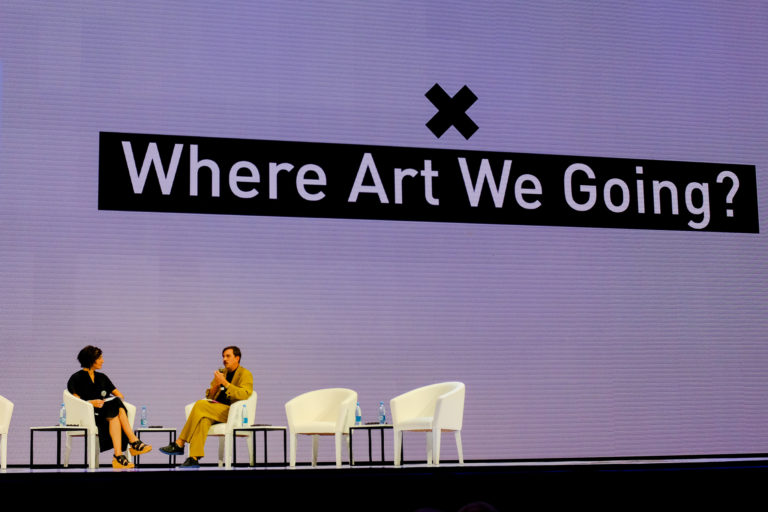
At Pixar, one of the most influential companies on childhood imaginations, Katherine’s philosophy is to only use technology when it is needed to better tell the story. For example, Inside Out is a film that she believes could only have been told through animation—how else could you communicate “abstract thought” in a movie? Outside of Pixar, she was also impressed by Spiderman: Into the Spiderverse and how it depicted multiple worlds through experimentation with animation.
At the core, Katherine says you need to focus on the universally relatable human elements of your story. Ultimately, Toy Story is a movie about coming of age, The Incredibles is about a family dynamic going through transitions, and Ratatouille is about achieving your potential—the technology used is just a vehicle for communicating these themes.
Katherine also said that technology can be limiting at times. Since it takes so long to create a film (it took her 6 years to produce Brave), there is always a new technology update or software release around the corner, and it’s tempting to constantly download them and “unlock” the current tech to make things better. However, it’s important to make sure that technology updates remain as a tool, and not a distraction.
“You don’t have to perfect the shininess of a penny, like the one on the bedside table in Boo’s room in Monster’s Inc. But it’s possible—and that’s the part where you need to draw the line and understand how much is too much,” said Katherine.
Richard Quest, Business Correspondent at CNN, showed how you can use tension to facilitate engaging conversations.

Although Richard didn’t give a talk during the conference, he moderated several panels. Normally, I find panels quite boring; you never know what you’re going to get. However, Richard did a great job understanding the backgrounds of each panelist and creating tension between their points of view. He would dart back and forth from opposing speakers, trying to understand where their thoughts converged and diverged.
Richard wasn’t afraid to provoke, and as a result, his sessions kept me at the edge of my seat. He also showed that it’s okay to interrupt thoughtfully. Mild interjections like “But wait a minute…” or “Hang on, what do you mean by that?” really helped to clarify the speakers’ main points.
We ended up attending all of his panels, regardless of topics, because they were so entertaining and high energy. It reminded me of the importance of having a good teacher—they can make you interested in any subject matter.


